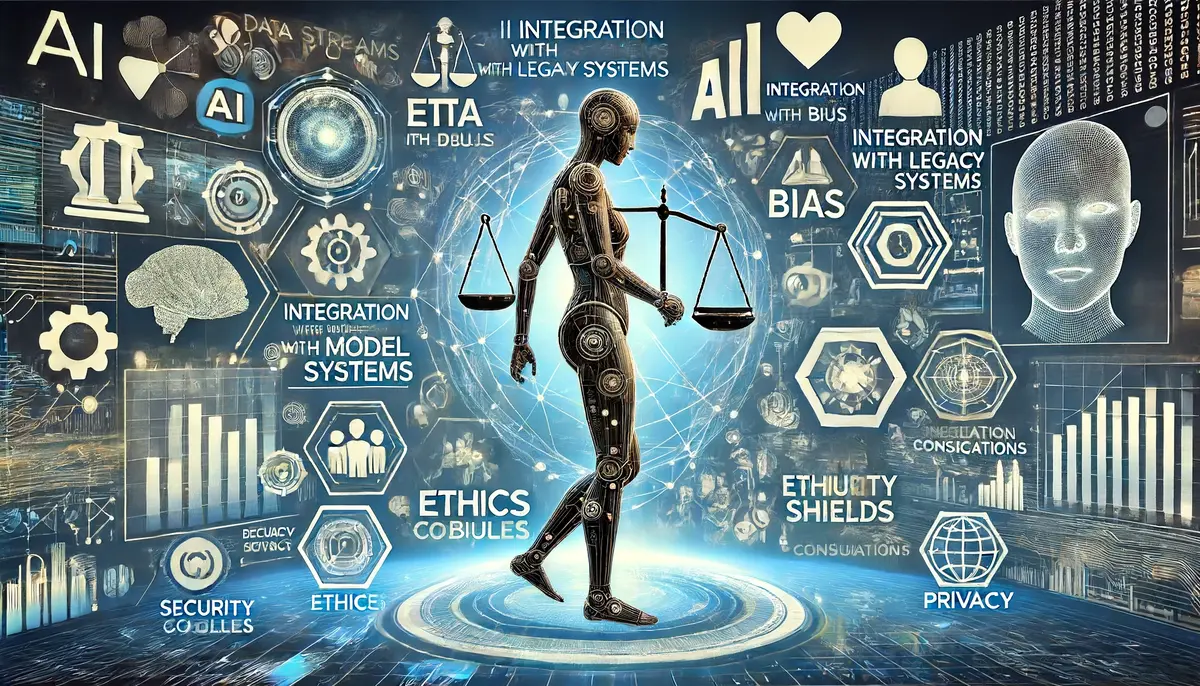AI agents are rapidly transforming the way we interact with technology. These intelligent systems, ranging from customer support chatbots to autonomous vehicles, are designed to perform tasks that typically require human intelligence. They perceive their environment, make decisions, and act upon those decisions to achieve specific goals.
While the potential of AI agents is immense, building them presents significant challenges. From acquiring high-quality data to ensuring ethical deployment, developers face numerous hurdles. This blog explores the key challenges in building effective AI agents and provides insights into overcoming them.
Care to save 90% of your call center costs?
Learn More Here
What Are AI Agents?
AI agents are systems capable of autonomous action in a given environment to achieve predefined objectives. Unlike traditional software, which follows explicit programming rules, AI agents learn from data and adapt their behavior accordingly. They can be categorized into several types:
- Reactive Agents: These agents operate purely on pre-programmed rules and do not store historical data. They respond to specific inputs without learning from past interactions. An example is a simple chatbot that provides pre-set responses.
- Limited Memory Agents: These agents can store and use historical data to make decisions. For instance, self-driving cars use limited memory to remember the speed of nearby vehicles.
- Theory of Mind Agents: These advanced agents can understand emotions, intentions, and beliefs of other entities, allowing them to predict behaviors. An example might be AI used in negotiations or strategic games.
- Self-Aware Agents: The most sophisticated type, these agents have a sense of self and can introspect. This level of AI remains largely theoretical.
Some examples
- Virtual Assistants: Siri, Alexa, and Google Assistant are reactive agents that use limited memory to provide contextual responses based on past interactions.
- Chatbots: Customer support bots like those used by banks and e-commerce sites provide automated assistance by understanding and processing natural language.
- Recommendation Systems: Netflix and Amazon use AI to analyze user behavior and suggest movies or products, enhancing user engagement.
- Autonomous Vehicles: Companies like Tesla use AI to navigate, recognize objects, and make driving decisions autonomously.
Key Challenges in Building AI Agents
AI agents require vast amounts of data to function effectively. This data must be both abundant and of high quality. There are then more than data-related challenges in building AI agents:
- Data Scarcity: In many fields, the amount of data required to train AI systems is limited. For example, in healthcare, obtaining extensive datasets for training diagnostic AI can be difficult due to privacy concerns and the sensitive nature of medical records.
- Data Quality: The effectiveness of AI is directly related to the quality of the data used for training. Poor-quality data—characterized by noise, incompleteness, or bias—can lead to suboptimal AI performance. For instance, a facial recognition system trained on a biased dataset may exhibit racial or gender biases.
- Overfitting: Overfitting occurs when a model learns too much from the training data, including its noise and outliers. This results in a model that performs poorly on unseen data. For example, a stock prediction model that overfits might work well on past data but fail to predict future trends accurately.
- Underfitting: Conversely, a model that is too simple may fail to capture the underlying trends in the data, leading to underfitting. This results in poor performance both on the training data and new data.
- Compatibility Issues: AI systems often need to interact with existing software and hardware that were not designed to accommodate them. This can lead to integration problems, such as incompatible data formats or communication protocols.
- API Limitations: Legacy systems may have limited or outdated APIs, making it difficult to connect them with modern AI solutions. For instance, integrating a new AI-based recommendation engine with an old e-commerce platform might require significant changes to the platform’s API.
Solutions
- Data Augmentation: Techniques such as creating synthetic data, adding noise, or rotating images can help increase the dataset size and variety.
- Data Cleaning: Processes to remove or correct erroneous data points ensure that AI models are trained on accurate, reliable data.
- Diverse Data Sourcing: Gathering data from multiple, varied sources can help mitigate biases and improve the generalizability of AI models.
- Regularization: Adding a penalty for larger coefficients in the model can help prevent overfitting.
- Cross-Validation: Using multiple subsets of data for training and validation ensures the model generalizes well to unseen data.
- Hyperparameter Tuning: Adjusting parameters such as learning rates and the number of layers in neural networks can optimize model performance.
- Modular Architecture: Designing AI systems in a modular fashion allows for easier integration with existing systems by isolating AI components and interfaces.
- Middleware Solutions: Middleware can act as a bridge between new AI systems and legacy infrastructure, facilitating data exchange and system compatibility.
- Gradual Integration: Implementing AI capabilities incrementally helps ensure a smooth transition and minimizes disruption to existing workflows.
Ethical and Societal Implications
Bias in AI systems can lead to unfair outcomes, perpetuating existing inequalities or creating new forms of discrimination. Addressing bias and ensuring fairness in AI is crucial for ethical deployment.
- Biased Decisions: AI systems trained on biased data may produce biased outcomes. For example, a hiring algorithm trained on data from a male-dominated industry might favor male candidates over equally qualified female candidates.
- Fairness Concerns: Ensuring AI systems make fair and unbiased decisions is essential for building trust and acceptance among users and stakeholders.
- Diverse Data Representation: Training AI models on diverse datasets helps reduce bias and improve fairness.
- Bias Testing: Regularly testing AI systems for bias and implementing corrective measures when biases are detected helps maintain fairness.
- Transparency: Making AI decision-making processes transparent allows users to understand and trust the outcomes.
- Data Breaches: Unauthorized access to AI systems can lead to data breaches, exposing sensitive information. For example, a breach in a medical AI system could reveal confidential patient information.
- Surveillance Risks: AI systems used for surveillance can infringe on privacy rights, leading to ethical and legal concerns.
- Data Encryption: Encrypting data ensures that it remains secure, even if unauthorized access occurs.
- Anonymization: Removing personally identifiable information from datasets protects individual privacy.
- Access Controls: Implementing strict access controls limits who can access and modify AI data, enhancing security.
- Black-Box Nature: Complex AI models, such as deep neural networks, can make decisions that are difficult to interpret and explain.
- Explaining AI Decisions: Understanding and explaining how AI systems arrive at their decisions is critical, especially in high-stakes applications like healthcare or finance.
- Explainable AI (XAI): Developing techniques to make AI decision-making processes more interpretable helps build trust and accountability.
- Model Interpretability: Using models that are inherently interpretable or incorporating interpretability techniques into complex models enhances transparency.
- User Education: Educating users about how AI works and its limitations fosters trust and informed decision-making.
Technological Constraints and Limitations
AI systems often require substantial computational resources, which can be a barrier to their development and deployment.
- High-Performance Computing: Training complex AI models demands significant processing power, which can be costly and energy-intensive.
- Infrastructure Limitations: Existing IT infrastructure may not support the computational requirements of advanced AI systems.
- Quantum Computing: Quantum computers promise to deliver unprecedented processing power for AI applications, potentially overcoming current hardware limitations.
- Specialized AI Chips: AI-specific hardware, such as Graphics Processing Units (GPUs) and Tensor Processing Units (TPUs), accelerates AI training and inference.
- Cloud-Based Solutions: Cloud platforms offer scalable computing resources, enabling organizations to leverage AI without investing in expensive on-premises hardware.
- Generalization Issues: AI models trained on specific tasks may struggle to generalize their knowledge to new, unrelated tasks.
- Gap Between Narrow and General AI: Current AI systems excel at narrow tasks but lack the broad capabilities of general AI, which would mimic human-like understanding and adaptability.
- Meta-Learning: Meta-learning involves creating models that can learn how to learn, enhancing their ability to adapt to new tasks and environments.
- Continuous Learning: Enabling AI agents to learn continuously from new data without forgetting previous knowledge improves their adaptability.
- Hybrid AI Approaches: Combining different AI methodologies, such as symbolic AI and machine learning, can overcome individual limitations and enhance overall capabilities.
Regulatory and Compliance Challenges
AI development and deployment are subject to various regulations and standards, which can differ significantly across regions and industries.
- Regulatory Landscape: Navigating the complex web of AI regulations requires understanding and complying with laws related to data protection, safety, and ethical use.
- Compliance Requirements: Meeting regulatory requirements is essential for legal and ethical AI deployment, ensuring systems operate within established guidelines.
- Healthcare: AI systems in healthcare must comply with regulations like HIPAA in the U.S. to protect patient privacy and data security.
- Finance: Financial AI applications must adhere to regulations designed to prevent fraud, ensure fair lending practices, and protect consumer data.
- Automotive: Autonomous vehicles must meet safety standards and regulations specific to self-driving technology, ensuring safe and reliable operation.
- HIPAA Compliance: AI systems used in healthcare must ensure patient data privacy and security, adhering to strict regulations like HIPAA.
- Fair Lending: AI systems in finance must avoid discriminatory practices and ensure fair access to credit, complying with relevant regulations.
- Safety Standards: Autonomous vehicles must comply with safety regulations to ensure they operate safely and do not pose risks to passengers or the public.
- Evolving Landscape: AI regulations will continue to evolve as technology advances and new applications emerge, requiring ongoing adaptation and compliance.
- Global Harmonization: Efforts to harmonize AI regulations across regions will facilitate international collaboration and deployment, promoting consistent standards and practices.
Emerging Solutions and Future Directions
As AI technology continues to evolve, new methodologies and approaches are emerging to address the challenges in AI development.
- Federated Learning: This approach allows AI models to learn from data across multiple locations without centralized data collection, enhancing privacy and security.
- Edge AI: Deploying AI models on edge devices, such as smartphones or IoT devices, reduces latency and improves real-time performance, enabling more responsive applications.
- Neuromorphic Computing: Mimicking the neural structure of the human brain, neuromorphic computing aims to create more efficient and powerful AI systems, capable of complex decision-making and learning.
- OpenAI: Collaborative initiatives like OpenAI promote knowledge-sharing and advance AI research, addressing ethical concerns and fostering innovation.
- AI Ethics Initiatives: Organizations and research groups are developing ethical frameworks and guidelines to ensure responsible AI development and deployment.
- Cross-Industry Partnerships: Collaborations across different sectors facilitate the development of innovative AI solutions, leveraging diverse expertise and resources.
- Quantum Computing: Quantum computing promises to revolutionize AI by providing unprecedented processing power, enabling the development of more sophisticated and capable AI systems.
- AI-Specific Hardware: Continued advancements in AI-specific hardware, such as GPUs and TPUs, will enhance AI training and deployment capabilities, supporting more complex and efficient models.
- Cloud AI: Cloud-based AI platforms will democratize access to advanced AI technologies, allowing a broader range of users and applications to leverage AI capabilities.
- Predictions: Over the next decade, AI agents are expected to become more capable, versatile, and integrated into daily life, transforming various aspects of work, communication, and decision-making.
- Potential Breakthroughs: Advances in general AI, human-like interactions, and seamless integration will enhance the role of AI in society, enabling more sophisticated and intuitive AI systems.
- Impact on Society: AI agents will continue to reshape industries, redefine roles, and improve quality of life, driving innovation and creating new opportunities for growth and development.
Care to save 90% of your call center costs?
Learn More Here
The Bottom Line
Building effective AI agents is a complex and challenging endeavor, but the rewards are immense. By addressing the key hurdles—data quality, model performance, ethical considerations, technological constraints, human factors, and regulatory compliance—we can harness the full potential of AI.
As we navigate the future of AI agents, continuous learning, innovation, and collaboration will be essential to realizing their transformative promise.







